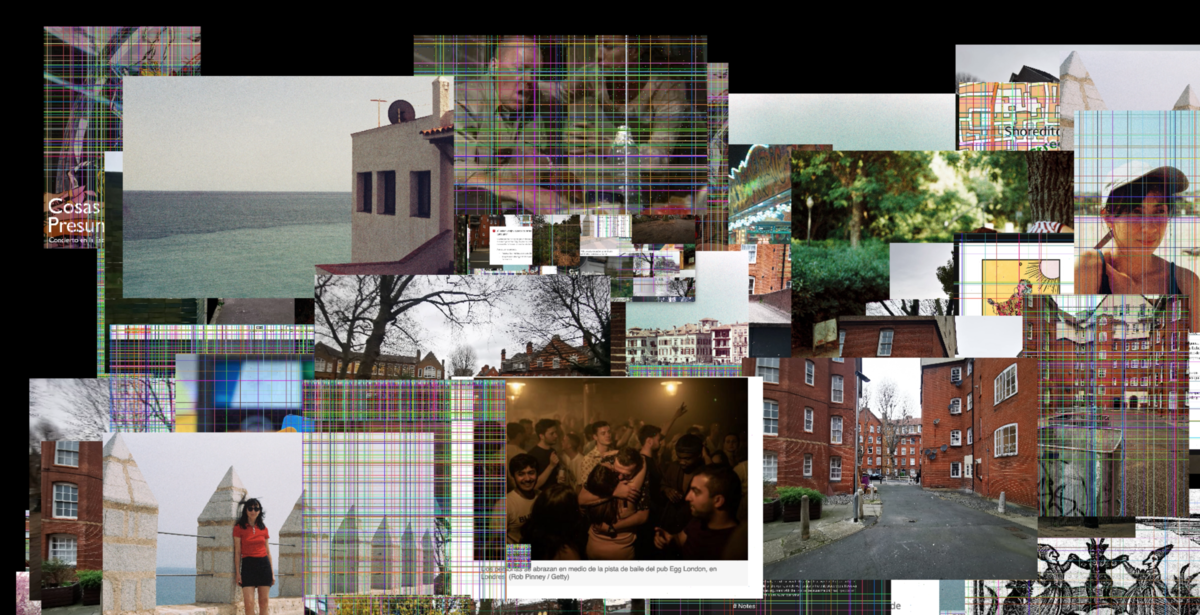Everything that was forgotten was indeed lost (2022)

(This text is a fragment I had to cut from a paper in Inmaterial, but which I rather liked, and which I felt put this project – which I never really considered to be a finished ‘work’ – in enough context that I felt happy sharing it. Therefore, I’m keeping it for posterity here).
Since July 2021 I have been carrying out an autoethnographic study of my own digital discard practices, keeping a reflective journal of what I choose to delete or save, when, and in what circumstances I make such choices, and my reasons for doing so. I chose to start with a piece of reflexive research for several related reasons: As an exercise in critical reflection as research in its own right, but also as a pilot for potential future ethnographic research with a wider set of participants. The idea of performing a pilot study on myself seemed of paramount importance when dealing with digital discards, as a question of research ethics – I suspected early on in the genesis of my research that the act of deleting a digital object might often stem from a desire to prevent the sharing or recall of that object – to prevent something private, intimate or secret being encountered by others, or something with painful or otherwise negative associations being encountered by ourselves. As such, the idea of performing a study investigating digital discards leads to both privacy and safeguarding concerns, hence my decision to begin with a reflexive investigation, in order to probe these questions further. I was assisted in this process by a small computer program I wrote which replaced the ‘trashcan’ icon on my laptop, logging metadata about each file I deleted (it’s name, location & type as well as the date and time of its creation and deletion) as prompts for later reflection, as well as silently archiving each deleted file, in order to produce a repository of unwanted digital objects for later use as part of speculative design and prototyping exercises.
One aspect of my own discard practices, and my relationship to my own digital discards that I noticed through this process, is that, while my initial hunch that my decisions to delete a file would be related to the desire to forget or withhold a memory was often correct – this desire was not necessarily fixed – I often found myself regretting or questioning these decisions, or finding delight or serendipity through my recall of a previously forgotten, discarded object.
Of course, these re-encounters with deleted files were to some extent the result of a flaw in my methodology – by archiving my deleted files as research artefacts they were never truly deleted – but this reflects a commonplace about digital technology – that ‘nothing is ever truly deleted’ (see, for example, Onuoha 2017). The act of deleting a file simply marks the space it occupies as ‘free’ for future use, and as more data is written to the same device, it is gradually overwritten and corrupted – decaying to make way for something new in a manner analogous to composting.
I decided to attempt to probe my reactions to reencounters with deleted files further, as well as attempting to find a way of making this process of digital composting visible, via the form of a screensaver. Screensavers hold a particular fascination for me due to the fact that they are, by definition, use-less – they are only roused when the computer is in an idle state – not being used for some instrumental purpose – “No action is possible except inaction” (Forcier 2021). In addition, the screensaver seemed an appropriate medium to explore the gradual processes of overwriting, decay and corruption going on within the machine itself due to their boundless, ongoing nature – which, as Kaitlyn Clifton Forcier has argued “articulates a logic of endlessness that is associated with the emergence of networked digital culture.” (ibid).
My screensaver, named Everything we had forgotten was indeed lost1, when activated, iterates through every image file in the trash on my computer, presenting it on the screen, while simultaneously overwriting it with a small amount of noise – randomly changing pixels or lines so that the image decays gradually over time, in a manner analogous to physical decay. This both confronts me with my deletion history, allowing me the capacity to be surprised or to question my own previous decisions, as well as allowing a for a period of repentance, in which i can recover an only-slightly-damaged copy of a file I might find myself regretting deleting. Over time however, all is irretrievably gone forever, absorbed by entropy, affording a finality to this deletion process and the possibility of renewal. This ongoing process places me into a relationship of intimate participation (Bataille, 1988) with the deletion algorithm – its visibility means that my choice to intervene by ‘rescuing’ a file or not, comes to matter.
Notes
- Taken from the Ted Chiang short story ‘Exhalation’ (Chiang 2019) which deals with similar themes of the mechanics of memory, forgetting, and entropy.
Bibliography
Bataille, G. (1991) The Accursed Share: Volume 1: Consumption. Translated by R. Hurley. New York.
Chiang, T. (2019) Exhalation: Stories. Alfred A. Knopf. New York.
Forcier, K.C. (2021) ‘Never Idle: The Animated Screensaver and the Culture of Always-On Computing’, Afterimage, 48(2), pp. 79–93. doi:10.1525/aft.2021.48.2.79.
Onuoha, M. (2017) . ‘What it takes to truly delete data’, FiveThirtyEight [online]. Available from: <https://fivethirtyeight.com/features/what-it-takes-to-truly-delete-data/> [Accessed 20th May 2022]